Season 19 saw the new incarnation of the Doctor, in the form of Peter Davison, take the reigns of the show and steer the programme in a completely new direction, at least for the opening year of his era. For the first time since the 1960s, we had a TARDIS crew that worked as a family, albeit a rather dysfunctional one.
From the Jon Pertwee era, it was quickly established that the Doctor would travel with one core companion; from (arguably) Liz Shaw to Romana, the Doctor travelled with one other (the exception being K9 who travelled with Leela, Romana, and Adric, but isn’t humanoid and was frequently left in the TARDIS/broken/faulty/hobbling along Brighton beach). But when John Nathan-Turner took over the role of producer from Graham Williams for the new series in 1981, changes were quickly made. Romana and K9 were written out in Warriors’ Gate and Adric was introduced in Full Circle, followed by Nyssa in The Keeper of Traken, and then Tegan in Logopolis where Adric and Nyssa also featured and helped the Doctor stop the Master’s latest scheme before he was forced to regenerate.
By the time 1982’s new series swung around, the TARDIS was crowded. We had the Doctor, Adric, Tegan, and Nyssa all jostling for screen-time. This wasn’t the first instance in the show’s history that there had been this many characters – indeed, William Hartnell and Patrick Troughton had three other companions each at various times. But by 1982, it was certainly a big change from what had recently been established.

It’s well-known that it was hard to write for four lead characters but whether consciously or not, the production team treated these characters like something of a surrogate family. The Doctor became the parent figure, Tegan was an older sister, Nyssa a younger one, and Adric a slightly younger brother.
In fact, if you were to look at the relationship between Adric and the Doctor, two characters who had known each other for a relatively long time before Davison came onto the scene, with a family angle, one could theorise that their relationship is one of a stepfather and a stepson. On one hand, Adric had been travelling in the TARDIS long before Tegan and Nyssa so he had gotten to know the Fourth Doctor, who, even in the previous season, had a fatherly way about him. When he regenerates in Logopolis and then at various points during Davison’s opening season, Adric has a few arguments with him about the way it used to be. He often brings up things that happened in the previous season and there are moments when he calls the new Doctor out on his actions (or inactions) – his ‘real’ Doctor wouldn’t have done that.
On the other hand though, considering once again the familiar angle, Adric served the role of the youngest sibling while Tegan and Nyssa had a little more maturity about them; if you are going to bring in the stepfather angle, then Adric wouldn’t really look upon the Fifth Doctor as his ‘real’ father. Theirs is an interesting relationship with some cool, intentional or not, concepts to be read into it.
Perhaps the reason why this TARDIS team works so well is because they were made into a family out of necessity. The Doctor had just regenerated and these were the first faces his new one saw. Adric’s brother Varsh had died in Full Circle and we never learnt about the rest of his family. Nyssa saw her home-world destroyed by an entropy wave released at the hands of the Master in Logopolis after the Time Lord had already murdered her stepmother and father, Tremas, in The Keeper of Traken. And we didn’t learn much about Tegan’s family but we know her Aunt was murdered by the Master in Logopolis (and we’d later meet her grandfather in The Awakening). The Master certainly has a thing about murdering family members, doesn’t he?!
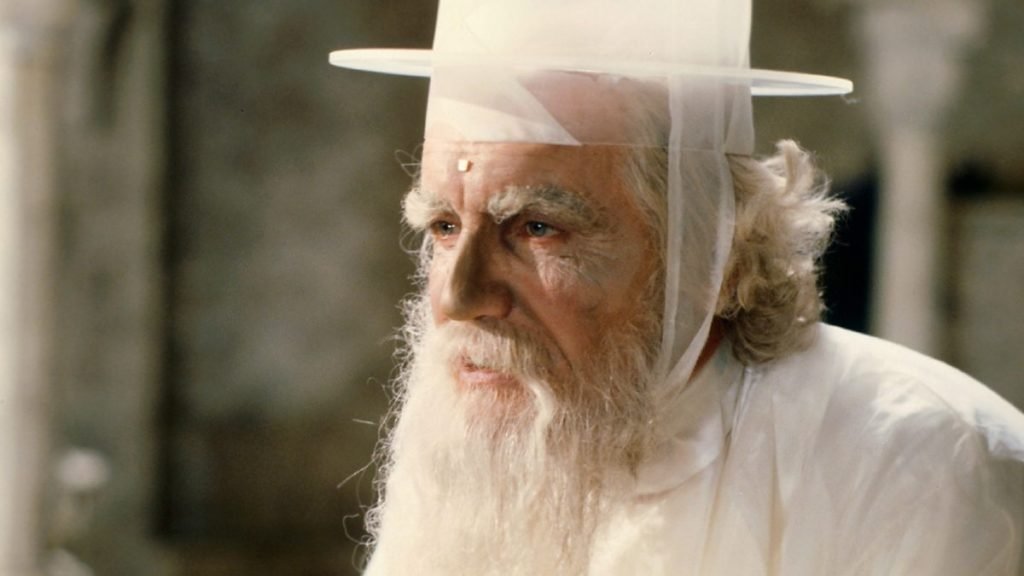
With a move to weekday nights, Doctor Who suddenly had to contend with soap operas like Emmerdale Farm and Coronation Street. Doctor Who was now shifted from its Saturday evening slot, thanks to a decline in viewing figures at the end of the Tom Baker era, to slots on Monday and Tuesday evenings. It was a format that EastEnders would take up when it debuted in 1985. Along with John Nathan-Turner pulling out all the stops to make sure the show got as much publicity as possible, the ratings shot up, with the opening story, Castrovalva reaching 10.4 million viewers by the time its third and fourth episodes came around. The Visitation, Black Orchid, and, strangely, Time-Flight also reached the 10 million mark when they were broadcast throughout 1982.
Season 19 has quite a strange recording order with Four To Doomsday, The Visitation, Kinda, and then Castrovalva recorded out of order, in a chance to give Davison a go at finding the Doctor before production started on his debut adventure. There are a few hints that this was indeed the case with Davison’s hair growing and getting cut again throughout the three former serials and Janet Fielding’s mispronunciation of ‘Mara’ in The Visitation.
But in terms of broadcast order, Castrovalva was the opening story of the season and was directed by Fiona Cumming with a script from Christopher H. Bidmead. Nowadays, Castrovalva is the concluding entry into what is ‘The Master trilogy’ with him having been brought back in The Keeper of Traken, then as foe once more in the following story, Logopolis.
Having kidnapped Adric, the Master has forced him to create the fictional world of Castrovalva as a way of trapping the Doctor, so that he can finally destroy his mortal enemy. But as the course of the story goes on, the Doctor begins to notice that things aren’t quite what they seem and, with Adric fighting against him as well, the Master’s plan soon falls apart.

Almost all of Episode 1 of Castrovalva takes place inside the TARDIS, largely between the Doctor, Tegan and Nyssa who are helping the Doctor recover from a problematic regeneration. Episode 2 sees the trio escaping the Big Bang thanks to a trap set by the Master and arriving in Castrovalva.
Castrovalva has always been one of my favourite stories and I love the visuals here by Fiona Cumming. Shot at Buckhurst Park, Birchden Wood/Ayttons Wood, and Harrison’s Rocks, the location sequences look stunning, made even better with the recent HD treatment the classic era has been given. It is clear that everyone is having a lot fun and there are plenty of gorgeous behind-the-scenes photographs and publicity shots around for us to enjoy.
One could argue that Castrovalva is about this new family all coming together – the sort of family that people get to choose. It is clear that there is some great chemistry between the cast members and as a result, even though they might sometimes fight, these characters will always have each others’ back.
If Castrovalva did a great job of bringing this unconventional family together, then Four to Doomsday does a good job of pulling them apart. The four-part adventure, broadcast between 18th January and 26th January 1982 was written by Terrance Dudley and directed by John Black.
I think its fair safe to say that Four to Doomsday will never be considered one of Doctor Who‘s greatest adventures but is it all doom and gloom? Well, no. Visually it is very impressive, easily standing up to the competition like Star Wars and Alien and the direction from Black is surprisingly enjoyable. The first story from Davison’s debut season to be recorded, it is clear that the cast have had a ball, even if the script wasn’t up to scratch.
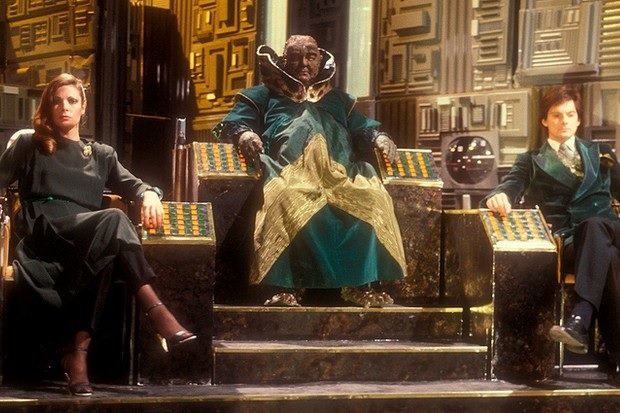
But as the story goes on, Monarch (Stratford Johns) and his assistants, Enlightenment (Annie Lambert), and Persuasion (Paul Shelly) have managed to wedge a few cracks into this new team. The most famous moment from this story is the scene between Tegan and Adric where they fight over the TARDIS key.
Perhaps this is also where people get their dislike of Adric from. Everyone knows that you don’t treat people like he does and this story sees him siding, yet again, with the villain. One wonders if this was supposed to be something interesting about his character but it just ends up coming across as one of his less savoury aspects, most notably having already done it in State of Decay and, in the next tale, Kinda. Even Nyssa gets angry towards him when he tries to tell Monarch about the TARDIS and how it travels.
It isn’t just Tegan and Adric that are at odds with each other: Adric and Tegan both fight with the Doctor and Nyssa comes to blows with Adric a couple of times. Fortunately, this is the most drama comes from these characters, with little from anywhere else. If you are going to watch Four to Doomsday, then maybe watch it for this angle in mind rather than looking for any kind of credible threat from the villain.
What really lets Four to Doomsday down is the script, which is dull and uninspiring. The cast have never kept it secret that they aren’t fans of Dudley’s writing – just listen to them slate Black Orchid on its commentary – but for me, this is the weakest of his contributions. There is a great idea here: people being replaced by android versions and kept alive under the rule of a giant talking frog, while he tries to conquer the galaxy. Monarch works much better as the villain than the talking frog did in It Takes You Away.

Kinda is a different kinda story from the rest of this series and certainly different from anything that had happened in Doctor Who beforehand. Written by Christopher Bailey and directed by Peter Grimwade and broadcast between 1 and 9 February 1982, Kinda tackles a number of religious themes, most notably from Buddhism. The Barry Letts era mulled over some of its concepts, but the way Kinda tackled it isn’t something Doctor Who had done before and hasn’t really done since; as such, Kinda and the follow-up Snakedance, hold a rather special place in the mythology of the show.
With Nyssa having to sleep in the Delta-Wave-Augmenter, most of the story is given over to the Doctor, Tegan, and Adric. Sarah Sutton had only been contracted for a certain number of episodes and Bailey’s script had originally only been written with two companions – as much as I love Sarah Sutton’s Nyssa, it is hard to see how her character would have fitted in.
Tegan falls under the evil influence of the Mara, which takes the form of a snake, no doubt influenced by the snake in the Garden of Eden. The Doctor and Adric have to escape and make sure that a survey colony survive to tell their home-world that Deva Loka isn’t suitable for colonisation, another strong theme running through this story, with shades of the treatment of the Australian Aborigines coming to the forefront very quickly. Script Editor, Eric Saward, has said it was an interesting script, working on a multitude of levels with its many religious influences.
Once again, Adric comes across worse-for-wear as he sides with the baddie, this time in the form of the deranged Hindle and this would have made sense if he was doing it out of some form of self-preservation. But it isn’t an avenue that gets explored and in the end, it just damages the character. Tegan, on the other hand, gets a lot to do here with Janet Fielding obviously delighting in getting to be evil.
Kinda is certainly a fascinating watch and needs more than one go-around to fully understand. Almost everything is named after Pali, the ancient Indo-European language derived from Sanskrit. Panna means Wisdom, Karuna means Compassion, and the planet Deva Loka means Heaven. Even now, there are no doubt elements of the script that are waiting to be discovered. But it can’t underestimated how different the themes of this story are compared to everything that came before and after.

Kinda is followed by The Visitation and for the first time we get to see this family unit properly working together. There are no fights, no siding with the baddies: just the Doctor, Tegan, Nyssa, and Adric fighting off the evil machinations of the Terileptils.
Fourth to be broadcast but second recorded, The Visitation, written by Eric Saward and directed by Peter Moffatt, was an instant hit with the cast and crew. Davison has often said that the stories where the Doctor and the crew had something to do with historical events have always been his favourite; The Visitation is no different with the Doctor being the reason why the Great Fire of London occurred in 1666.
While The Visitation was a hit both with cast and crew, and in terms of viewing figures with Episode 4 reaching 10.1 million viewers, the script is another which shows the writers were having some trouble with the number of companions. While Saward certainly made sure that Nyssa and Adric had enough time on screen, many of the contributors to this series were beginning to have trouble in giving the characters plenty to do.
However, The Visitation feels a lot different to the previous instalments of Season 19 because not only is it the most traditional of Who adventures but there are no companions who seemingly side with the antagonists. It’s great to see this TARDIS team working together for a change, and to see new dynamics forming. Adric and Tegan, who had been at each others’ throats in Four to Doomsday get along nicely, helping one another escape the clutches of the Terileptils, and the Doctor and Nyssa get a lot to do together too.
The Visitation boasts an impressive creature design in the form of the Terileptils whose leader’s (Michael Melia) mask was partially animatronic. As a result, the Terileptils are not only one of the most impressive things of this series, but the entire Classic era of the show.
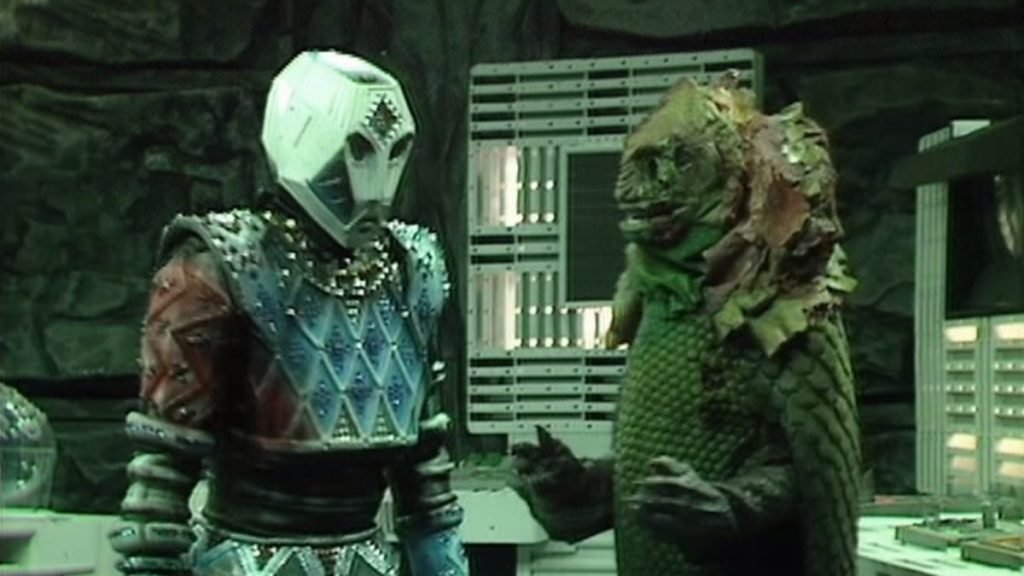
Leaving Pudding Lane in 1666, the TARDIS then arrives on the platform of a railway station in the 1920s and the Doctor is soon embroiled in… a cricket match.
Black Orchid is quite unique in the show’s history. Not only was the first purely historical adventure since The Highlanders back in 1966-67, but it was the first time that Doctor Who had done a straight-up murder mystery with no alien creatures or influences.
I really like Black Orchid and would say it is one of my absolute favourite Doctor Who adventures but among the main cast, it wasn’t a favourite. Davison has said multiple times that he thought the script from Terrance Dudley wasn’t up to much but was perhaps the idea of John Nathan-Turner.
If we look at the other stories surrounding this one, we’ve had plenty of heavy science-fiction themes running through all of them. Castrovalva was written by Christopher H. Bidmead so its going to be full of scientific ideas and jargon. Four to Doomsday was set in the future, with a giant talking frog turning people into android slaves. Kinda was full of religious themes and has always required multiple viewings to fully understand. And The Visitation saw the Doctor and gang putting a stop to an alien plot to spread the plague. Even the last two stories, Earthshock and Time-Flight featured heavy science-fiction plots and returns from old villains. For this TARDIS team, this was the last chance to give them a little light-hearted fun.
And what fun we have. There is some great location work undertaken at the Buckhurst Park Estate as well as a number of dance numbers, including the foxtrot and other traditional ballroom dances – and who could forget Janet Fielding performing the Charleston! All the dances were choreographed by Turner’s partner, Gary Downie who commented on Matthew Waterhouse having two left feet, and as a result, that’s why Adric spends so much time around the buffet table. But hey, we’ve all been in Adric’s position, eh?
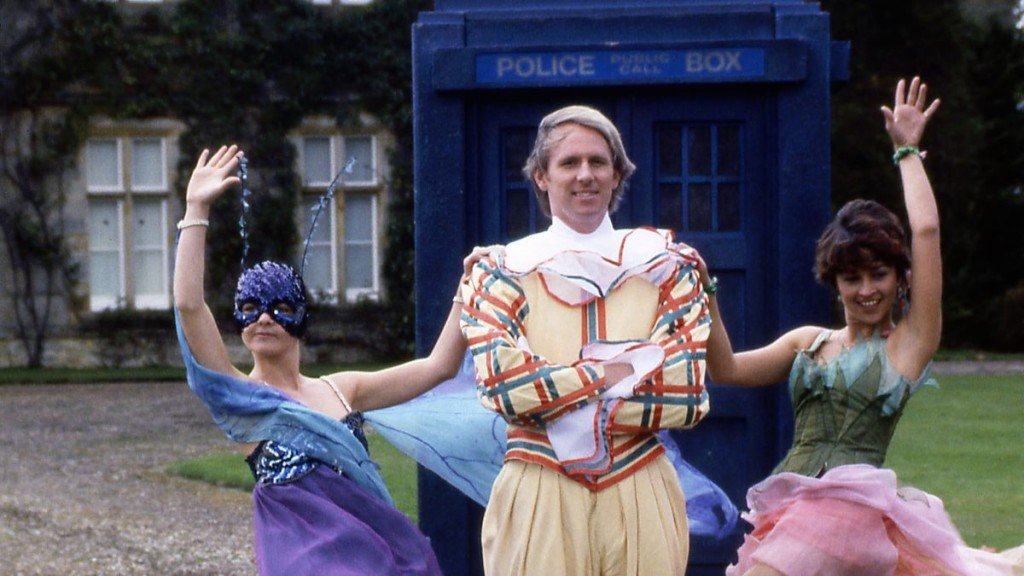
Black Orchid was a story that was designed to show off the character of Nyssa and her actress, Sarah Sutton who also plays Nyssa’s doppelganger, Anne Talbot. Director, Ron Jones had a lot of trouble in casting the double for Sutton and instead, they went for the split-screen technique: easy enough to do today, but back in 1982 was very time consuming.
Black Orchid gives the cast a chance to let their hair down and have plenty of fun. It also saw the TARDIS crew having to work together to prove the Doctor’s innocence and discover the real killer. And for a story that the whole cast supposedly disliked, there are some really strong performances on display.
It will always be more of a success than the production team let on and it is certainly one of the dark-horse stories from this season.
Following on the light-hearted adventure Black Orchid, came the heavy, dark, and gritty action-adventure, Earthshock. When it was first broadcast, it made headlines for a couple of massive reasons. The first was the shock appearance of the Cybermen at the end of Episode 1 and the death of Adric at the conclusion of Episode 4. Nowadays, these aren’t really big surprises unless you’ve been living under a rock for the past 30 years and didn’t know Adric doesn’t make it! However, one can’t underestimate how massive those shocks were back in 1982.
Again written by Eric Saward because his initial contract as Script Editor had come to an end, John Nathan-Turner asked him to follow up his concept for a big Cybermen adventure. The Cybermen had previously been seen in 1975’s Revenge of the Cybermen with Tom Baker and for fans of a certain age, the metal meanies were either a hazy memory or something they had read about in the Target novelisations.
The return of the Cybermen was a huge moment – so huge that the Radio Times offered Nathan-Turner a front page picture which he declined because he didn’t want to ruin the surprise. And what a return it was! We’ve got some genuinely tense scenes with the creatures probably for the first time since Tomb of the Cybermen and David Banks does a tremendous job of bringing the sadistic Cyber-Leader to life. He is one of the best things to come out of the Eighties era of the show: giving his Cyberman some emotion, or at least a sinister undercurrent, really works, in a way it shouldn’t do, and makes him stand out from all the other actors who played a similar role.
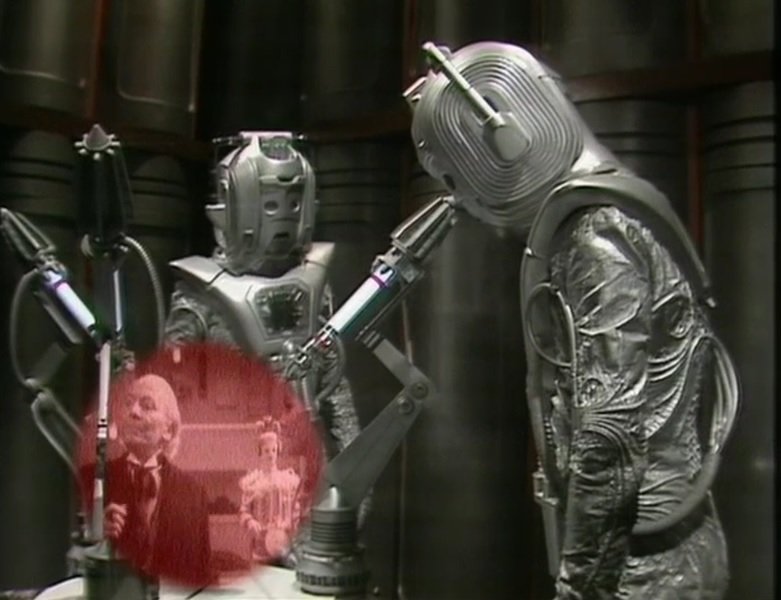
Also worth mentioning is that this story was another example of John Nathan-Turner’s ‘star-casting’ with Beryl Reid as the Captain of the freighter. While it is clear that Reid as absolutely no idea what is going on, much to the amusement of the main cast on the DVD commentary, I’ve always thought it works! If the Captain were real, she wouldn’t have any idea what was happening so it makes sense that Reid wouldn’t either. Right?
While he wasn’t happy with the ending of his character, Matthew Waterhouse actually delivers a powerful performance here. Almost from the beginning, Saward pairs the Doctor and Adric up, putting Tegan and Nyssa on a backseat for a while, giving this pair one last chance to be the friends they were when Adric was travelling with the Fourth Doctor. It is a nice throwback and makes Adric’s death a rather poignant moment. It also changed the foundation of the show as it gave it weightier stakes. The last companion to die was Sara Kingdom in 1965’s The Daleks’ Master Plan. Now, you could never be certain if your favourite companion would make it out alive by the end of their tenure.
What hits even harder is that Adric is on his own when he dies, like his brother Varsh in Full Circle. The roles here are certainly reflections of that former serial: in Full Circle, Adric couldn’t get to his brother, and here, the Doctor can’t get to his companion. It was the first time in a while that the Doctor seemed fallible. The Doctor had lost and it helped cement the idea that Saward had of making the Doctor a much more human hero. And just like that, as in real life, an instant changes everything. The world suddenly feels more vulnerable and scary. The family is shattered.
In fact, perhaps that’s what’s meant when people say the Fifth Doctor is ‘too human’. This was always the intention, alongside the family setting – this was a Doctor who failed, who didn’t always win the day; this was a Doctor who cared in a way the others hadn’t before.
Season 19 wrapped up with what is considered one of the worst Doctor Who adventures of all time, Time-Flight, written by Peter Grimwade.

While I don’t mind Time-Flight – indeed the first episode is quite intriguing – the rest of it falls apart thanks to its strange-perspective sets, dull direction from Ron Jones, and the surprisingly flat performances from everyone involved.
However, with the shock departure of Adric at the end of the previous story, 10 million viewers tuned into Episode 1 to see if he would come back. And he would, in the second episode, where he would appear as one of the Master’s apparitions to deter Tegan and Nyssa from getting to the heart of his power. This would be the last time we see Adric in the television series.
Stranger, though, was how quickly everything was wrapped up at the beginning of Episode 1, showing how quickly it had to be shoehorned into the script. We get a few lines where Tegan and Nyssa are upset and ask if they can go back to save him. The Doctor tells them they can’t; it would upset their own timelines. While it’s a bit muddled in how it deals with temporal-mechanics, understandably the writers couldn’t go too much into this. But then, it is never mentioned again, not even during the course of this story.
Perhaps one of the best things about this story are the few promotional shots we have of the TARDIS trio stood outside Concorde. With the snow in the background, they make for great images.
With the Master defeated and everything wrapped up, the TARDIS returns the Doctor, Tegan, and Nyssa, plus the crew of the missing Concorde to present day Heathrow. The TARDIS dynamic shifts again, with the Doctor believing that Tegan has decided to stay on Earth and he and Nyssa leave her and a bewildered crew stood on top of one of the terminal buildings.

Of course, Tegan would return in the opening story for the next series, Arc of Infinity, but it is a surprisingly effective departure for a companion, as the last shot is Tegan crying at being left behind. Credit should go to the production team who managed to pull-off two effective companion departures in one series!
Across all of Season 19, the main theme is one of family, love and loss, and death. For the first time since the 1960s, these adventures had a surrogate family travelling through the TARDIS, one thrown together through struggle and strife: Nyssa’s whole planet had been destroyed, Tegan’s aunt had been killed by the Master, the Doctor had gone through a traumatic regeneration, and Adric had just suffered the loss of his brother and the Fourth Doctor.
Gradually, through these adventures, these four characters come to be very close and care about each other, even though they bicker and argue and storm out on each other. It’s almost soap-opera-like in its execution but the science-fiction elements help to make it much more enjoyable.
What also helps is the chemistry between the main cast. It is clear how close Peter Davison, Janet Fielding, Sarah Sutton, Matthew Waterhouse, and even Anthony Ainley became over the course of the series. It’s one of the biggest appeals of the Fifth Doctor’s era and, as a result, makes Season 19 a resounding success.
NEXT: It’s all coming back to me now.
